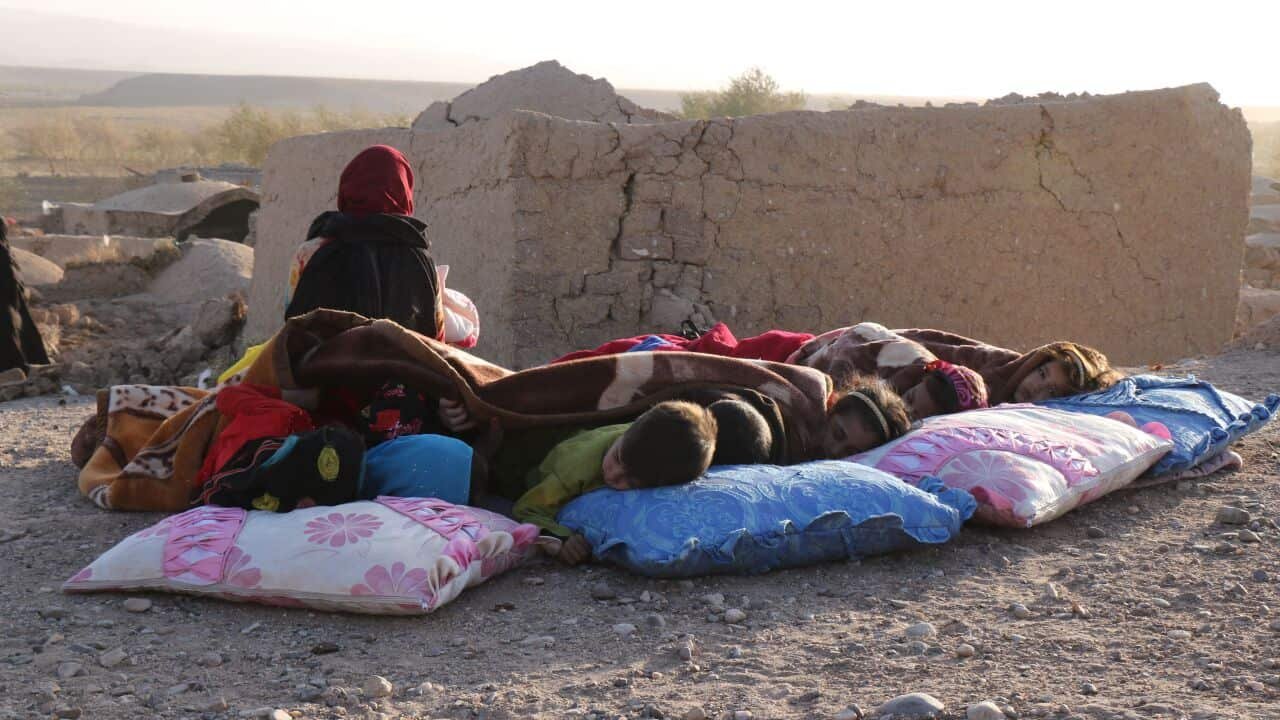Key Points
- Two powerful magnitude-6.3 earthquakes followed by strong aftershocks struck western Afghanistan on Saturday.
- The death toll has risen to 2,445, a Taliban government spokesman says.
- Reportedly, around six villages have been destroyed and hundreds of civilians have been buried under the debris.
More than 2,400 people have been killed in earthquakes in Afghanistan, the Taliban administration says.
The earthquakes and aftershocks were the deadliest to strike the country in two decades.

The series of earthquakes are some of the deadliest to strike the country in two decades. Source: AP / Omid Haqjoo / AP
They were among the world's deadliest quakes this year after tremors in together killed an estimated 50,000 in February.
Taliban ministry spokesperson says death toll may increase
Janan Sayeeq, spokesman for the Ministry of Disasters, said that the toll had risen to 2,445 dead but he revised down the number of injured to "more than 2,000".
Earlier, he had said that 9,240 people had been injured. Sayeeq also said 1,320 houses had been damaged or destroyed.
About six villages have been destroyed and hundreds of civilians have been buried under the debris, he said while calling for urgent help.
More than 200 dead had been brought to various hospitals, said a Herat health department official who identified himself as Dr Danish, adding most of them were women and children.
Bodies had been "taken to several places - military bases, hospitals," Danish said.
"Partners and local authorities anticipate the number of casualties to increase as search and rescue efforts continue amid reports that some people may be trapped under collapsed buildings," the United Nations said.

Powerful earthquakes killed at least 2,400 people in western Afghanistan, a Taliban government spokesman said Sunday. It's one of the deadliest earthquakes to strike the country in two decades. Source: AAP / Benyamin Barez
The United States Geological Survey said the quake's epicentre was about 40km northwest of Herat city.
It was followed by three very strong aftershocks measuring magnitude 6.3, 5.9 and 5.5, as well as lesser shocks.
Disaster authority spokesperson Mohammad Abdullah Jan said four villages in the Zenda Jan district in Herat province bore the brunt of the quake and aftershocks.
WHO dispatches assistance to affected region
The World Health Organization in Afghanistan said it dispatched 12 ambulance cars to Zenda Jan to transport people to hospitals.
"As deaths & casualties from the earthquake continue to be reported, teams are in hospitals assisting treatment of wounded & assessing additional needs," the UN agency said on X, formerly known as Twitter.
"WHO-supported ambulances are transporting those affected, most of them women and children."

Multiple earthquakes struck western Afghanistan's Herat province on 7 October 2023. Source: AP / Rodrigo Abd / AP
Videos on social media showed hundreds of people in the streets outside their homes and offices in Herat city. Herat province borders Iran.
The quake also was felt in the nearby Afghan provinces of Farah and Badghis, local media reported.
Taliban urges speedy assistance
Abdul Ghani Baradar, the Taliban-appointed deputy prime minister for economic affairs, expressed his condolences to the dead and injured in Herat and Badghis.
The Taliban urged local organisations to reach earthquake-hit areas as soon as possible to help take the injured to hospital, provide shelter for the homeless, and deliver food to survivors.
They said security agencies should use all their resources and facilities to rescue people trapped under debris.
"We ask our wealthy compatriots to give any possible co-operation and help to our afflicted brothers," the Taliban said on X.
In June 2022, a powerful earthquake struck a rugged, mountainous region of eastern Afghanistan, flattening stone and mud-brick homes, killing at least a thousand people and injuring about 1,500.

